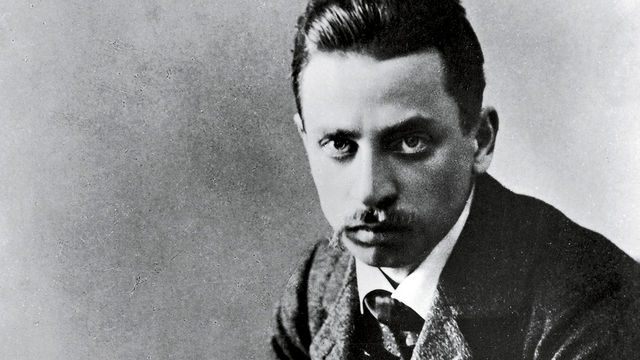The following is an excerpt from Spellbound: The Art of Teaching Poetry, a new book from Teachers & Writers Collaborative. Edited by Matthew Burgess, Spellbound offers a range of exciting ideas to inspire students of all ages to explore their potential as writers and creators.
I tell the students to push back their chairs, stand up, and tell each other their life stories…in sixty seconds. The teacher looks horrified intrigued as she watches her thirty or so middle school students talking all at once. I close the door because, admittedly, my lesson on revision is getting loud causing a cacophony— but it’s an enthusiastic cacophony; therefore, music to my ears. My objective is to forever replace the typical groans students emit when they’re told it’s time to revise with the scratching of eager pens— but the busy, shouting, laughing storytellers don’t yet know they are currently generating material for writing exercises that will, I hope, re-write their understanding of what writing is. Whether it’s fourth-graders in Greenwich, Connecticut, or sixth- graders in Brownsville, Brooklyn— or even my MFA students at The New School University — I hope to let students in on the secret: that for me and most authors I know, writing is revision. Or rather, reVISION.
Changing the Language of reVISION
Magic words do exist. By exploring the language we choose to frame tasks for students, we can create an abracadabra vocabulary to open minds, make negativity disappear, and summon positive, curious attitudes. For example, in education, the process of revision often gets equated with the act of correction; the word correction implies that you’ve done something wrong that needs fixing. This can subtly and immediately induce sensations of failure, embarrassment, or shame in students, deflating their confidence, provoking defense mechanisms— and groans. Go back over your work hinders enthusiasm because the idea of going back suggests a regression; the word “over” is associated with “do over,” suggesting we are asking students to repeat a task they’ve already done and perhaps struggled through. If we want students to be moved to revise, we need language that signals a forward movement, a fresh start. Here are some suggestions to try, edit, and make your own.
reVISION (replaces revision): the act of reVISION is where you, the writer, make unique creative choices, express your personality/ style, and take control over how you and your work will be presented to the world. This is where you make big choices of structure, length, order, voice, language, rhythm, character, setting, and more. This is being a powerful writer!
Polishing (replaces correcting or fixing): This is where you make sure your work has its teeth brushed, buttons buttoned, hair combed. This is spelling, punctuation, grammar, handwriting, typos, spacing. This is being a proud proofreader!
“What if…?” is the open sesame to creative thinking. It allows for fresh ideas, imaginative possibilities, big brainstorms. (Replaces try something different or come up with a new idea.)
“Read your piece with fresh eyes; continue creating by making new choices.” (Replaces go back over your work or clean it up, fix things, make it longer, etc.)
Warming Up for reVISION: An Interactive Introduction to Engage Students
Warning: This activity will get noisy. However, it will be over in about four minutes.
Step 1: Create Partners
Have the students choose A or B. Assure them they will both be doing the same thing; pairing should be made as comfortable as possible.
Step 2: Instructions
A: Announce, Okay, for the first round, partner A, you are the Storyteller and partner B, you are the Greatest Listener Ever. Partner A, you will have sixty seconds to tell B…your LIFE STORY! Wait for the shocked and confused faces, the “Whaaaat?” Then say, What this means is totally up to you. There is no right or wrong way, so long as you remain school appropriate. I will put some prompts on the board and walk around in case you need inspiration. Prompts to put on the board might include (if time allows, ask students to help brainstorm):
- information about my family,
- places I’ve been, dreams I’ve had,
- meals I’ve eaten, feelings I’ve had,
- languages I speak,
- mistakes I’ve made,
- subjects I’ve studied,
- scary memories,
- exciting memories,
- things I’m proud of.
B: Announce, There are only two rules. Rule 1: Storyteller, you must speak for the entire sixty seconds. Rule 2: The Greatest Listener Ever must be…the greatest listener ever. What will that look, sound, feel like?
Ask the Greatest Listener Ever to notice when they want to interrupt with a “YEAH me too!” or a “Huh?” or “No way!” but not to act on it.
Give the listener a simple and specific task, such as telling them that after A is done speaking, they will need to tell A one thing, such as: something they’d like to know more about; or one thing they found funny, interesting, striking, or confusing.
C: Ask them to stand in Storyteller and Listener stances. This creates a sense of play and coaxes energy.
Step 3: Go!
A: Using a stopwatch or the second hand on the clock, give a dramatic countdown to Go! Use a flick of the light or bell to give them thirty- and ten-second warnings and to signal stop. Instruct everybody to take a deep breath together. Give the Listeners ten seconds to make their observation, instructing A not to respond but to simply take it in.
B: A & B switch roles; repeat above.
C: Now, repeat the cycle but change the time to thirty seconds. Coach lightly with questions such as, Will you start the same or differently this time? Did your partner’s questions give you any new ideas?
Options: You may do another round at fifteen seconds or one at ninety seconds, or alter the time frame as you feel is appropriate for your students.
Step 4: Reflect and Connect
A: Ask students, Which time frame was hardest? Easiest? Why?
B: Validate all answers by pointing out that every writer is unique, and might even experience things differently on different days. One day it might be hard to get started, another day it might be impossible to stop!
C: Ask them to relate the time lengths to different forms of writing: What are short forms? Long? (poems, flash fiction, novellas, novels, movie scripts, articles, commercials, greeting cards, etc.)
D: Now ask, What stayed the same and what changed between your story versions? Why did you keep or change certain things? How? Did you change the order? The content? Let the conversation evolve and keep a list of the observations on the board, distilling their comments into useful language for revision. (Record and save for future use.) I usually put up a combination of their direct speech as well as reinterpretions of some of their ideas to introduce revision vocabulary. Your list might include:
- Kept what was honest.
- Kept what was true.
- Put things I cared about first.
- Cut out boring stuff.
- Added something I forgot to say.
- Began with a different part.
- Got to the end.
- Clarified, emphasized, re-ordered, replaced, added…
E: Write “reVISION” on top of the list. Ask why the VISION is capitalized. Discuss how reVISION is about thinking big and being creative. Besides writing, when else in life is it important to be able to reVISION something?
Refreshing reVISION: Two Activities to Make Re-writing Exciting
Six-Word Memoirs to reVISION Your Life Story
NOTE: You can call them SixWord Mottos, or SixWord Bios.
Step 1:
Announce, You will now write your life story…using only SIX WORDS.
Step 2: Model
Create your own, find some at www.smithmag.net, use the student examples here, or share mine: Eavesdropping, spying daydreamer writes, erases—, writes… . Ask students what each author wanted you to know about them. For example, when I read the student example “Running red lights, stopping at green,” other students have observed: “He wants us to know that he’s a rule-breaker.”
“He takes risks.” “He’s unpredictable.” “He’s dangerous!”
Step 3: Go!
Remind students that, There is no right or wrong way to do this, only your way. Validate all writing speeds by inviting them to take time crafting one memoir or trying out several as needed. As a project or ultimate challenge, students can create a poem using Six-Word Memoirs. They’ll likely ask if they can use five or seven words; I let them decide for themselves if articles count and encourage them to use punctuation to help shorten. (It’s a great way to teach about commas and semicolons.) Student examples include:
Curious, unique, artistic, talkative, beautiful, Russian.
Took the pain and used it.
Like a chocolate chip, semi-sweet.
Young parents’ sacrifice turned out alright.
A path without an accurate map.
Dear me, I am better here.
Sophia means wisdom, wisdom means smart.
I am snow and sun bunched into one.
A small raindrop ready to splash.
reVISION the World Poems
Introduce this by showing revision examples of your own work or that of another author to show them how professional writers revise. For example, after a conversation with my editor about an early draft of my picture book, Stop That Yawn!, one big reVISION I made was changing the setting from the real-life New York City to the imaginary Never Sleeping City. This opened the story to more fun and created a fantastical world that the illustrator, LeUyen Pham, could really go wild.
Step 1:
Put previous or newly brainstormed list of revision tactics/vocabulary on the board. Examples include:
- Find a fresh start.
- Add details.
- Add dialogue.
- Cut words/sentences that don’t move the piece along.
- Clarify your meaning.
- Replace dull words with dynamic ones.
- Play with the pace.
- Rearrange sentences.
- Expand a scene/thought.
- Explore a new question.
- Insert an opinion.
- Prove your point with a fact.
- Explore your setting.
- Punctuate!
- Raise the stakes.
- Discover the drama!
- Intensify the climax.
- Put your heart into it.
- Create a moment that echoes.
- Put power in your ending.
Step 2:
Share one of the samples below and/or lead the group in creating a poem together using the following steps.
Step 3:
Brainstorm and choose a “juicy” subject. Just as when making orange juice you want to choose oranges that have enough juice to fill the whole glass, when writing you want to choose a subject with enough juice to fill an entire poem or story (e.g., family, siblings, rain, neighborhood, pets, friendship).
Step 4:
Ask students to use one or more pieces of reVISION language as a prompt for each line of the poem. Each line should express what they’d like to change about the topic. For example: “School reVISION: If I could revise school / I would cut out all the bullying / expand recess and art / clarify my homework / substitute the cafeteria with a five-star restaurant / give it a ten o’clock beginning / find an ending that you’ll never forget…”
Step 5:
Tell them they each get to write their own “______________ reVISION” poems.
Step 6:
Share!
Here are some student reVISION
poems.
World revision
Cut out all the haters
Rearrange some personalities
Bold the love
Underline the importance
Punctuate the fights!
Lengthen the good timesssssss
Backspace the school
Add parties
Strengthen the power.
––Ayanna (6th grade)
Relationship revision
If I could revise my relationships with people…
I would CLARIFY who my real friends are,
I would CUT OUT the people who bring me down,
I would ADD more free-spirited people in my life,
I would REARRANGE the choices I make,
I would BOLD FACE the problems I’m gonna have to go through,
and lastly, I would EMPHASIZE that I’m just me!
––Chyna (6th grade)
Applying Their VISION: Students Rewrite Their Own Work
Now that you have your students immersed in the language and power of revision, send them to look at their own work, whether it’s poetry, fiction, or essay, with fresh eyes and sharp tools. You may want to use these additional ideas:
- Type up first drafts. I’ve found it greatly enables students to see clearly what their work needs, and revision notes will stand out against the type.
- Structure achievable goals. Using a graphic organizer, notebook, or loose-leaf, have students identify: Something powerful about this piece is_________. When people read my piece I want them to feel__________; think about________; want to_______________(action). Then have them list one to three reVISION tactics they will focus on; for example, “re-order,” “find a strong beginning,” “add details,” etc.
- Create an atmosphere of concentration: Play some calm music in the background and let them work.
- Partner for polishing: When they have truly finished their reVISIONS, ask them to trade poems with a partner for help with polishing (checking spelling, punctuation, and grammar) to feel like they are checking the mirror to see that there’s nothing caught in their teeth. Friends should always, kindly, help each other with spinach and spelling.
NOTE: Add, cut, rearrange, and reVISION this lesson plan as needed to suit your vision. The work is always in progress!
Caron Levis’ picture book, Stuck with the Blooz (Houghton Mifflin Harcourt 2012), was listed as one of Bank Street College’s Best Children’s Books of the Year. She teaches social/emotional, communication, and literacy skills through creative writing and drama to kids of all ages. She is a T&W teaching artist, and the advisor and adjunct faculty for the New School University’s Creative Writing for Children MFA program, where she earned her degree.



